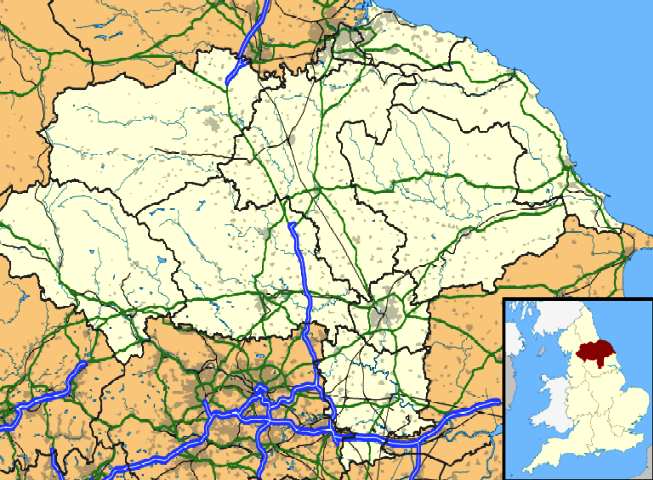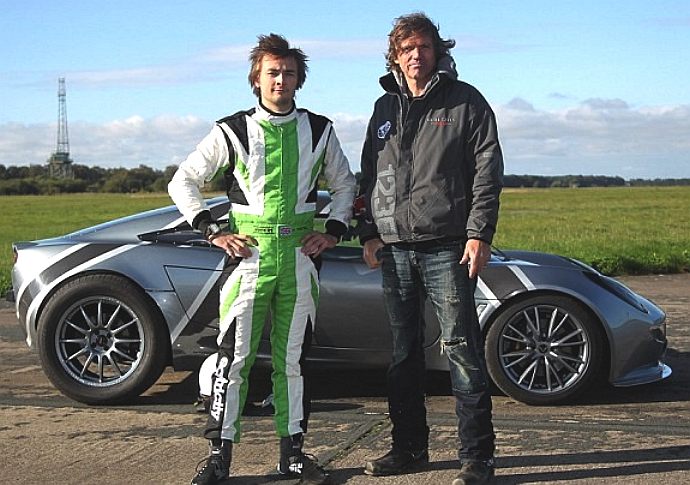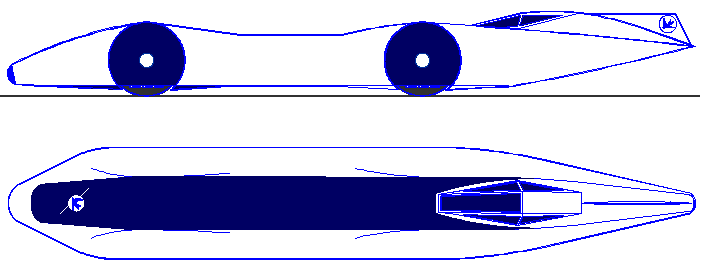|

Elvington, North
Yorkshire, United Kingdom
RAF Elvington was a Royal Air Force station which operated from the beginning of the Second World War until 1992 located at Elvington, Yorkshire, England.
History
Royal Air Force use
Located 7 miles south east of York on the B1228, the base was originally a grass airfield within No. 4 Group. In the early 1940s the airfield was entirely reconstructed with three hardened runways replacing the grass. The base was re-opened in October 1942 as a station for 77 Squadron RAF and along with RAF Melbourne and RAF Pocklington was known as "42 Base". The squadron had a strength of approximately 20 aircraft and initially used the twin engined Armstrong Whitworth Whitley medium bomber although this was quickly replaced by the Handley Page Halifax four engined heavy bomber which was being introduced. 77 Squadron suffered heavy losses during its time at Elvington with over 500 aircrew killed, missing or taken prisoner and almost 80 Halifaxes lost as it played a major part in the Battle of the Ruhr and the bombing of Berlin.
In May 1944 77 Squadron re-located to the newly opened RAF Full Sutton and was replaced at Elvington by two French squadrons, numbers 346 "Guyenne" and 347 "Tunisie" who both played a leading part in the bombing of Germany. Elvington was the only airfield in the United Kingdom used by the remainder of the Free French Forces, they also flew Handley Page Halifax heavy bombers until they moved to Bordeaux in October 1945 where they became the basis for the new air force of liberated France. In September 1957 a memorial was unveiled in Elvington village dedicated to the two French squadrons. While they were at RAF Elvington nearly half of the squadrons' members were killed. After the war the 400-acre (1.6 km2) airfield was transferred to 40 Group Maintenance Command until 1952 when it was greatly enlarged and extended for use by the United States Air Force.

United States Air Force use
In 1953, the US Air Force moved into Elvington and totally rebuilt the airfield for the third time.
The United States Air Force built a new 3,094 m (10,151 ft) runway, which was the longest in the north of England, and a huge 19.8 hectares (49 acres) rectangular
hard-standing apron as well as a new control tower to turn Elvington into a "Basic Operation Platform" which would have operated as a Strategic Air Command (SAC) dispersal airfield. After spending £4 million the airfield never became operational as a SAC base and was abandoned by the US Air Force in 1958.
In the 1960's, RAF Church Fenton and RAF Linton-on-Ouse used the airfield as an RLG and ELG right up until the early 1990's. Today, the remaining wartime airfield buildings have been renovated to their former glory and house the superb Yorkshire Air Museum. The airfield itself has been the location for the hugely successful Yorkshire Air Spectacular series of
airshows, but has recently been disposed of by the MOD.
Other uses
In the early 1960s the Blackburn Aircraft Company, now part of British Aerospace used the runway for test flights of the Blackburn Buccaneer. Elvington retained its status as an RAF relief landing ground and was used by the RAF flying training schools at RAF Church Fenton and RAF Linton-on-Ouse until the airfield was finally closed in March 1992.
Record breaking
On 3 October 1970 Tony Densham, driving the Ford-powered "Commuter" dragster set a record at Elvington, averaging 207.6 mph (334.1 km/h). over the Flying Kilometre course. This broke
Malcolm Campbell's record set 43 years previously at Pendine Sands.
In 1990 Elvington hosted an attempt to match the speed record run of the Sunbeam Tiger motor car, originally driven by Henry Segrave (on 21 March 1926, he set his first land speed record in his 4-litre Sunbeam Tiger Ladybird on the sands at Southport, England at 152.33 mph). The re-run at Elvington on the two mile (3 km) runway was recorded at 159 mph (256 km/h).
In the summer of 1998, Colin Fallows bettered Richard Noble's outright UK Record in his "Vampire" jet dragster at 269 mph (433 km/h) at Elvington.
The current British Land Speed Record holder is Vampire, driven by Colin Fallows, who hit a speed of 300.3 mph (483.3 km/h) on 5 July 2000 at Elvington.
On 20 September 2006 Elvington Airfield was the location of a serious crash involving the Top Gear presenter Richard Hammond. The jet-powered car he was driving crashed while travelling at 280 mph (450 km/h). Hammond received serious brain injuries but made a full recovery. The accident investigation said: "an almost instantaneous blow out of the right side front tyre caused the accident."
A number of British
electric vehicle (class) records have been set on this former MOD airfield in
North Yorkshire, now run as a private business by Elvington Events Ltd.

The venue offers
approximately 3 kilometres of smooth level straight line surface.
This is sufficient to allow Blueplanet BE3 to confirm the expected performance when
run at Bonneville or other International venues and get the feel of the
vehicle. It might even be possible to set a new British record
currently stated as 136mph, which we understand is for the flying
kilometer.
In
September of 2012, Nick
Ponting, a 21 year old estate agent from
Gloucestershire sponsored by Ecotricity,
raised the British
electric land speed record to 157 mph in a converted Lotus Exige,
called Nemesis.
John
Campbell would however like to
run BE3 on the concrete just for the experience and to see exactly what racers of
the past have been up against. Perhaps a nostalgia event after
completion of trials.
Present day
The airfield is now owned by Elvington Park Ltd. The adjacent buildings and control tower have been restored, and serve as the Yorkshire Air Museum which has many varied and rare aircraft and exhibits, including a complete Halifax bomber. Once a year Elvington hosts a privately sponsored airshow, which incorporates modern military aircraft and classic aircraft as well as displays by the
Red Arrows and the Battle of Britain Memorial Flight. Over the years since the airshow began, various spectacular events have taken place here, including the only gathering of a Lancaster, Halifax, and an American B17 in recent times; also one of the last successful flights of a then flying BF109G, prior to its crash at Duxford the following month.
Elvington is also a popular motorsports venue for motorcycle racing and the Auto 66 club. It is also home to the York Land Yacht Club. Land sailing takes place regularly at weekends with speeds of up to 50/60 mph achieved.
LINKS
Map
sources for Pendine Sands
The
History of RAF Elvington
Imperial
War Museums' collection of photographs from RAF Elvington
Photographs
of Elvington
Blueplanet
Ecostar - side and plan elevations - solar powered electric land speed
record car
|



